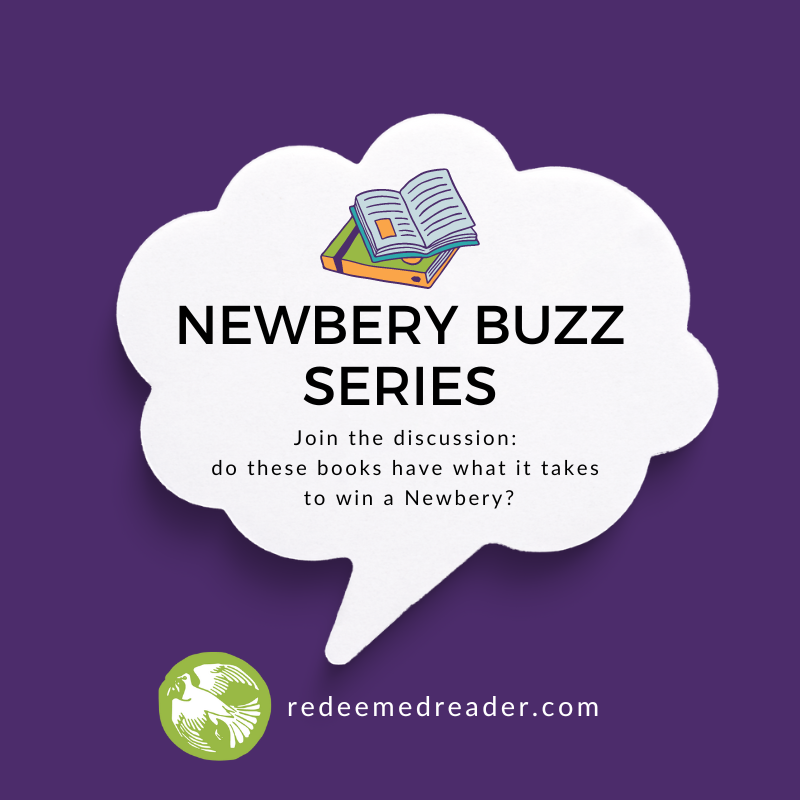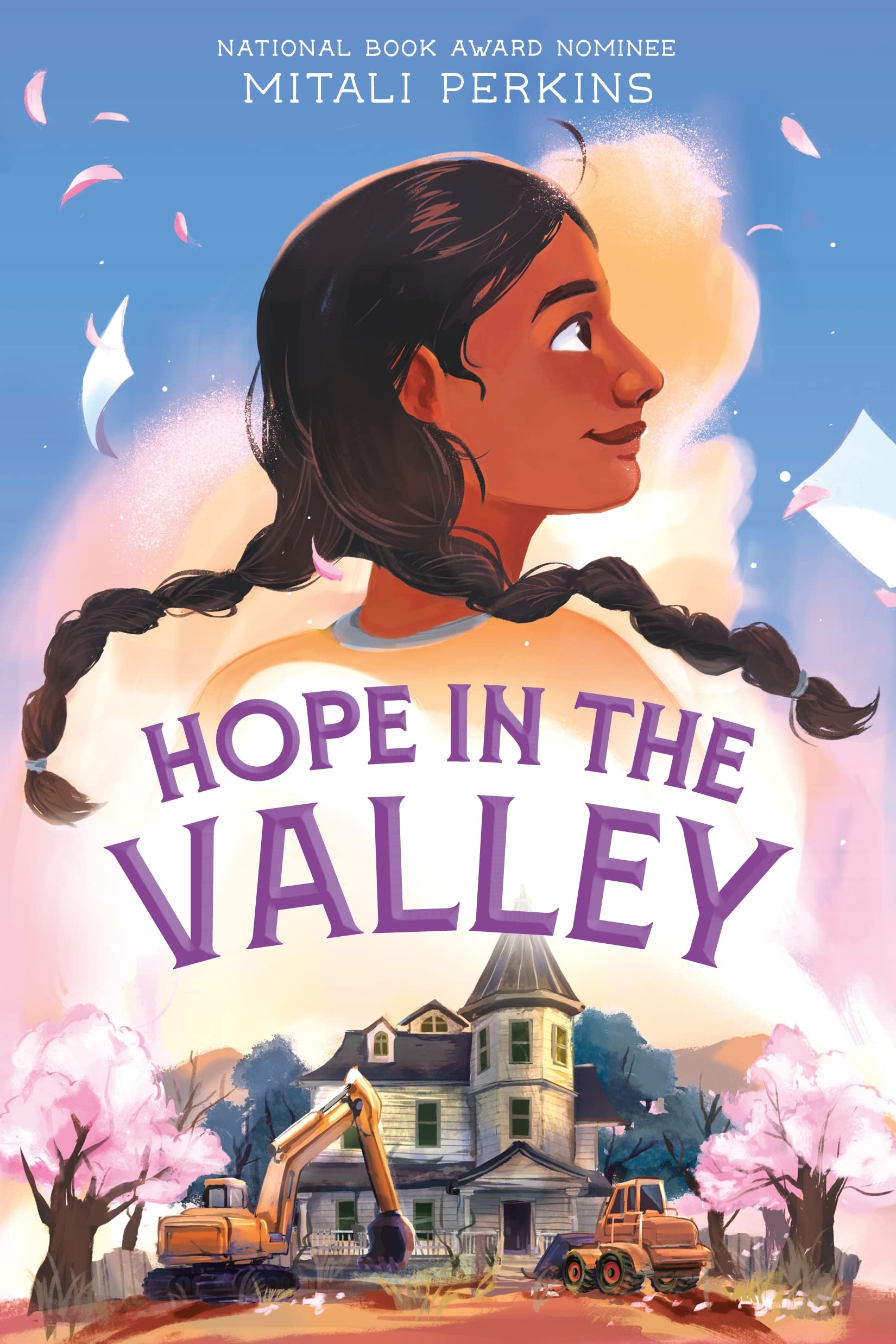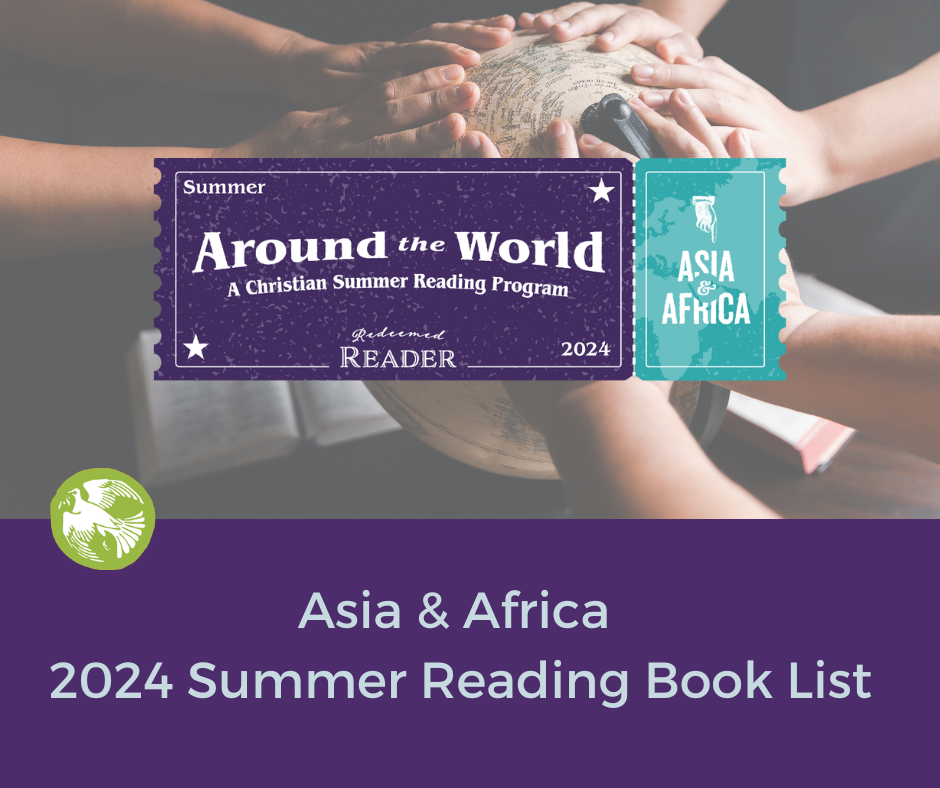It’s no secret to long-time RR readers that we love Mitali Perkins (*and* her books). We’ve reviewed nearly all of them to date, from picture books to chapter books to middle grade books to young adult books to her book-about-books, Steeped in Stories. BUT, we’ve never discussed one of her books for our Newbery Buzz series before.
One reason is that many of her books are outside the normal Newbery age range (although picture books have won, it’s rare; books for teens and adults are too old). This year, we’re changing that and discussing her latest middle grades offering, Hope in the Valley.
To read the rest in our series or previous years’ discussions, check out the Newbery Buzz Page.

Hope in the Valley: Timeless Historical Fiction
Betsy: Hayley, you and I both loved this book. Would you start us off with a brief summary of the book for those who haven’t read your full review?
Hayley: I’d be happy to! It’s 1980, and Pandita Paul is ready for summer. That is, until her plans are upended, and a construction project threatens one of her favorite places. Added to that, her family has “helpfully” signed her up for music camp, and shy Pandita is determined to hide her beautiful voice. While some clues indicate the time is 1980—Pandita doesn’t have a cell phone and her friend calls on their landline—this felt very timeless.
I feel like it has many ingredients of a middle grade coming of age: Pandita is still processing the death of her mother. She has friend issues. She is shy, but she loves to daydream and write poems. I feel like she is a character many readers will be able to relate to.
Hope in the Valley Is a Hopeful Book
Hayley: Betsy, I think you and I have talked about how we both guessed how the story would end … and saw some of the connections long before Pandita did. I was thinking though about how nice it is that the story DOES do what you expect. And how reassuring it can be when you can guess how the story ends. There is no dramatic plot twist. No sudden trauma or tragedy. I think one of the beauties of this story is its very predictability. Despite Pandita’s sorrow, it is a very comforting story. What do you think?
Betsy: Yes, Hayley, that’s a good word for this book: comforting. The book deals with some significant personal issues (grief over a mother’s death and lack of close friends) as well as broader social issues (re-zoning a residence for multi-family residences), but Mitali manages to make it a feel-good story despite those elements. And, I think that’s partly because Mitali shares our same Christian hope; all will be well and all manner of things will be well. It may not happen this side of heaven, but we can hope because we know THE Hope of the world.
What Stands Out in Hope in the Valley
Betsy: Mitali’s Christian convictions aren’t as outspoken in this book as in some of her others (such as in Forward Me Back to You, for teens), but I do love how she illustrates the theme of loving your neighbor. There are so many interesting “neighbors” from which to choose, and there’s also the larger question in this book of loving your actual, next-door neighbor. What were some of your favorite examples of this in the book?
Hayley: Ooh, that’s a good question! I loved the example that Pandita discovers of Aunty Lydia—that is where Christian faith shines clearest in the story. But I also love the “neighbors” who are adults, and yet take time to befriend and encourage Pandita: Ms. Maryann the librarian, and old Mr. Marvin. It could even be said that Baba’s friend, The Intruder, is a good neighbor to Pandita!
Thinking over the book though, I also love how Pandita learns to be a good neighbor, even if that means stepping outside her comfort zone. Her friendship with Leo as well as Mr. Marvin, and her participation in town meetings, show that there are many meanings to being a neighbor.
I think something Mitali does well in this book is reflect the world and some of the hard bits of community. That could be disagreement, even within a family, on the best community course of action. Or it could be realizing that you’re seen as an outsider, even though you’ve lived in a community all your life. I love that Mitali acknowledges this tension, but she doesn’t glorify it. This could have been an issues book, but instead, it felt like a story first. Betsy, did you notice that balance, too?
Betsy: Absolutely—and I think that’s something Mitali does consistently well in her body of work. She’s nudging us as readers to open our eyes a bit wider and really see those around us, but she never sacrifices her stories just to make a point. Instead of writing books-with-a-message, she’s writing stories that are well-rounded and rich.
I kept thinking about Emily of Deep Valley as I read this book, and I know that Mitali loves that book, too. Emily of Deep Valley not only has similar themes and situations, but Lovelace is also writing a story first, not an issues book. Did you notice any connections to Emily of Deep Valley? It’s one of your favorites, too.
Hayley: You know, now that you bring up the connection, I have to say, I do see some similarities! A shy heroine stepping out of her comfort zone. Community meetings. An old house (I feel like the house is a definite echo!). Yes, it definitely has some hat tips to that story, but stands on its own as it captures a younger coming of age.

Does Hope in the Valley Have What It Takes?
Hayley: The question is, Betsy … do you think it can win? I would love to see it get some attention; it has the feeling of many of the classics that have won Newbery medals and honors in years past. I don’t know if it could take gold, but I would love to see it with an honor on its cover!
Betsy: I would love to see a shiny sticker on the cover, too! Mitali’s You Bring the Distant Near garnered some National Book Award love. I don’t think it’s a stretch to believe her middle grade fiction could share some similar love. One element that Hope in the Valley has that’s missing from books like Nothing Else But Miracles is a current issue: a housing crisis that’s exacerbated by community attitudes towards those of other races and/or socioeconomic levels. Mitali did quite a bit of research for the specific scenarios playing out in the book (in California in the 1980s), but these are ongoing discussions and problems in our communities today. The activist trend we’ve seen in so much children’s literature lately is muted in Hope in the Valley, but it will still resonate with those anxious to promote these causes. In that sense, I think it hits a sweet spot: a book that kids will enjoy reading and a book that critics will respond to positively. It would be fantastic to see a book awarded that is such a good story with such a likable heroine (one that kids will connect with!).
Readers: do you agree with us? Have you read Hope in the Valley?
For the rest in this Newbery Buzz series, past and present, don’t miss our main Newbery Buzz series page!
Stay Up to Date!
Get the information you need to make wise choices about books for your children and teens.
Our weekly newsletter includes our latest reviews, related links from around the web, a featured book list, book trivia, and more. We never sell your information. You may unsubscribe at any time.
Support our writers and help keep Redeemed Reader ad-free by joining the Redeemed Reader Fellowship.
Stay Up to Date!
Get the information you need to make wise choices about books for your children and teens.
Our weekly newsletter includes our latest reviews, related links from around the web, a featured book list, book trivia, and more. We never sell your information. You may unsubscribe at any time.
We'd love to hear from you!
Our comments are now limited to our members (both Silver and Golden Key). Members, you just need to log in with your normal log-in credentials!
Not a member yet? You can join the Silver Key ($2.99/month) for a free 2-week trial. Cancel at any time. Find out more about membership here.



